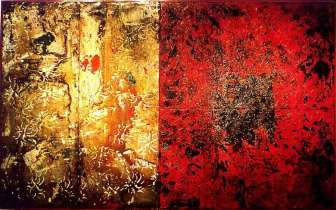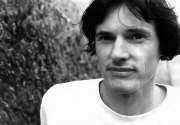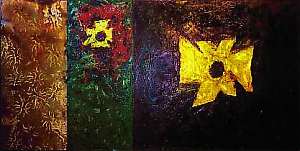Michael Matthews

Artists
- Wim Botha
- Bob Cnoops
- Hugo Crosthwaite (Mexico)
- James de Villiers
- Sasha Fabris
- Gordon Froud
- Rookeya Gardee
- David Hlynsky (Canada)
- Ashley Johnson
- Nkosinathi Khanyile
- Ania Krajewski
Michael Matthews

DASART shows
Transmigrations - the show
Fokofo
Dasart Archives
"It has always been done so - it is custom."
I see rituals as potential signifiers for something else. The ritual and its consequent objects are a form of institutionalised rebellion, and can become an act of rebirthed rebellion in the transposition from the source rite into another form. When a ritual is recorded, transposed or re-synthesised the meaning is renewed. The renewed ritual now offers, via metaphor, a way to new realities that can be interpreted and experienced by a general public outside that of the initiates. The new objects that are created are evidence of the translation process of the original ritual; they have new meanings and associations.
I have spent the last five years investigating Colonial values, particularly those evoked by the art found in South African Art Galleries. This investigation resulted in the Dasart Victoria and Dasart Colonial Mutations Installations. What I found is that the rituals and items of rural Africans, seen out of context, provoke a similar reaction in me as do the artworks collected during the greater half of this century by these museums. The suggestion of investigating "the other" first came to me from Dieter Reusch, an anthropologist, when he took me to observe an Umenulo - a coming of age ceremony - in Msinga in April 1997.

I saw a connection between what I had been investigating and the possibilities of expanding this investigation. The problem that I was now presented with was : how does the 'colonial' understand these deep-seated rites and rituals; these objects and items. In South Africa, the items that result from rituals are often presented in art galleries as 'Objects d'art'. They are removed from context and meaning. The meaning that is offered to the viewer is that the items are firstly aesthetically pleasing, and secondly, they act as a bridge that hopes to clear the racial prejudices of a recent past. This is exactly what the South African galleries were doing with their collection policy at the turn of the century.
I found the solution in adopting the processes of the observer. By adopting these processes, the works for this exhibition aim at a synthesis of understandings, offering a renewed way of interpreting meaning. The semantic opposition between the actual rituals and its associate objects and the synthesised ritual thus becomes loaded with associations. It is a method that relies on perception as experienced rather than conceptual deduction. The result of this position is that new objects replace the original objects, suggesting new evidence. Evidence that needs to be retraced into new rituals with new objects. The new rituals and their metaphors becoming an ongoing process of rebellion.

Michael Matthews
Top